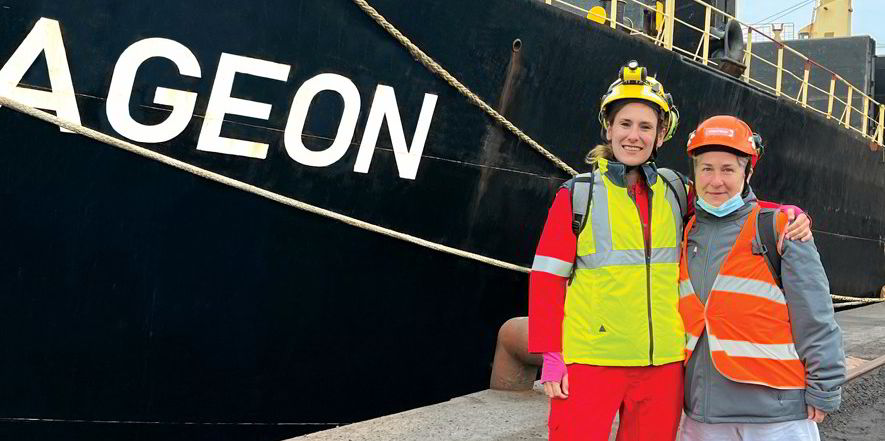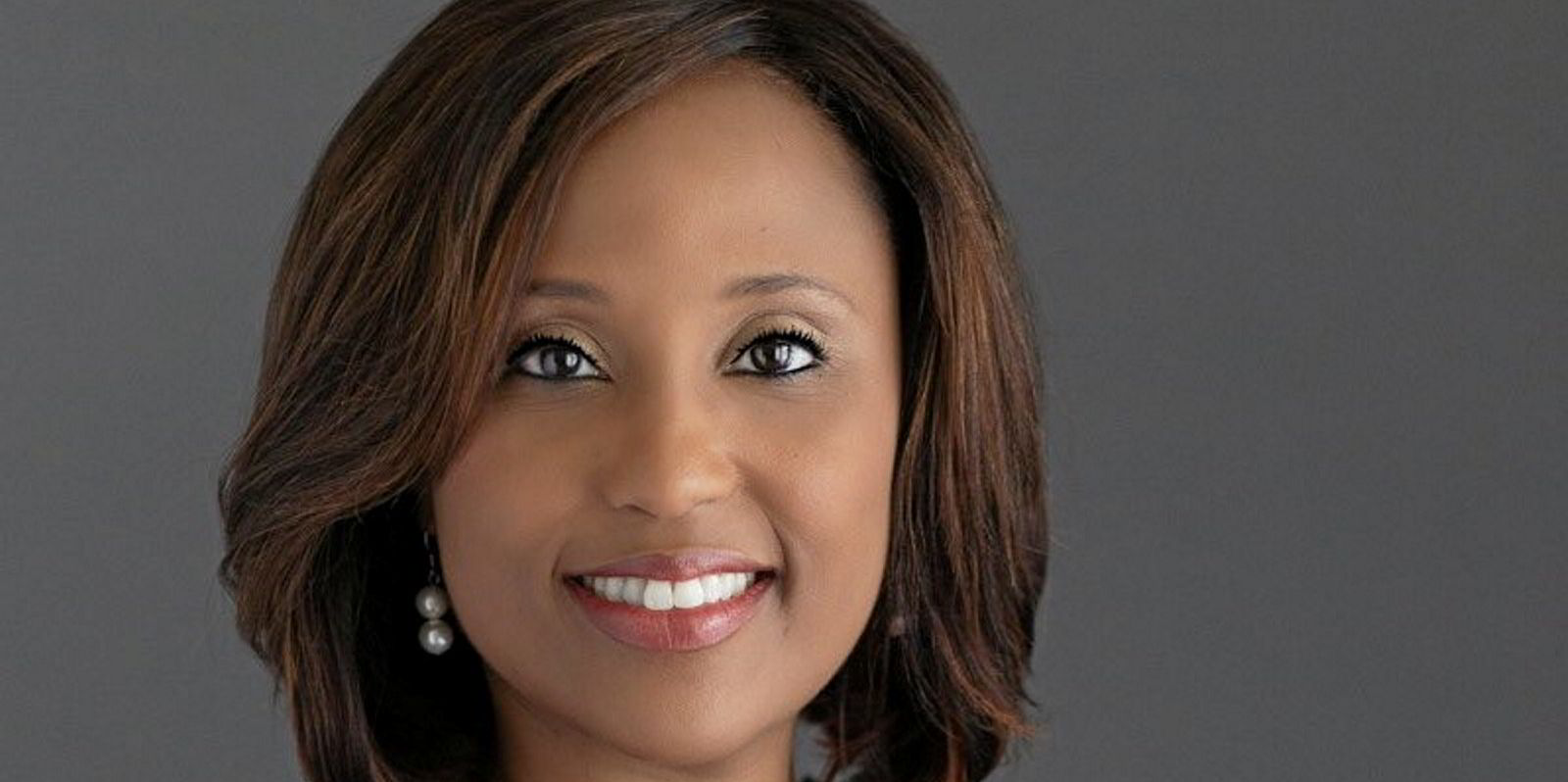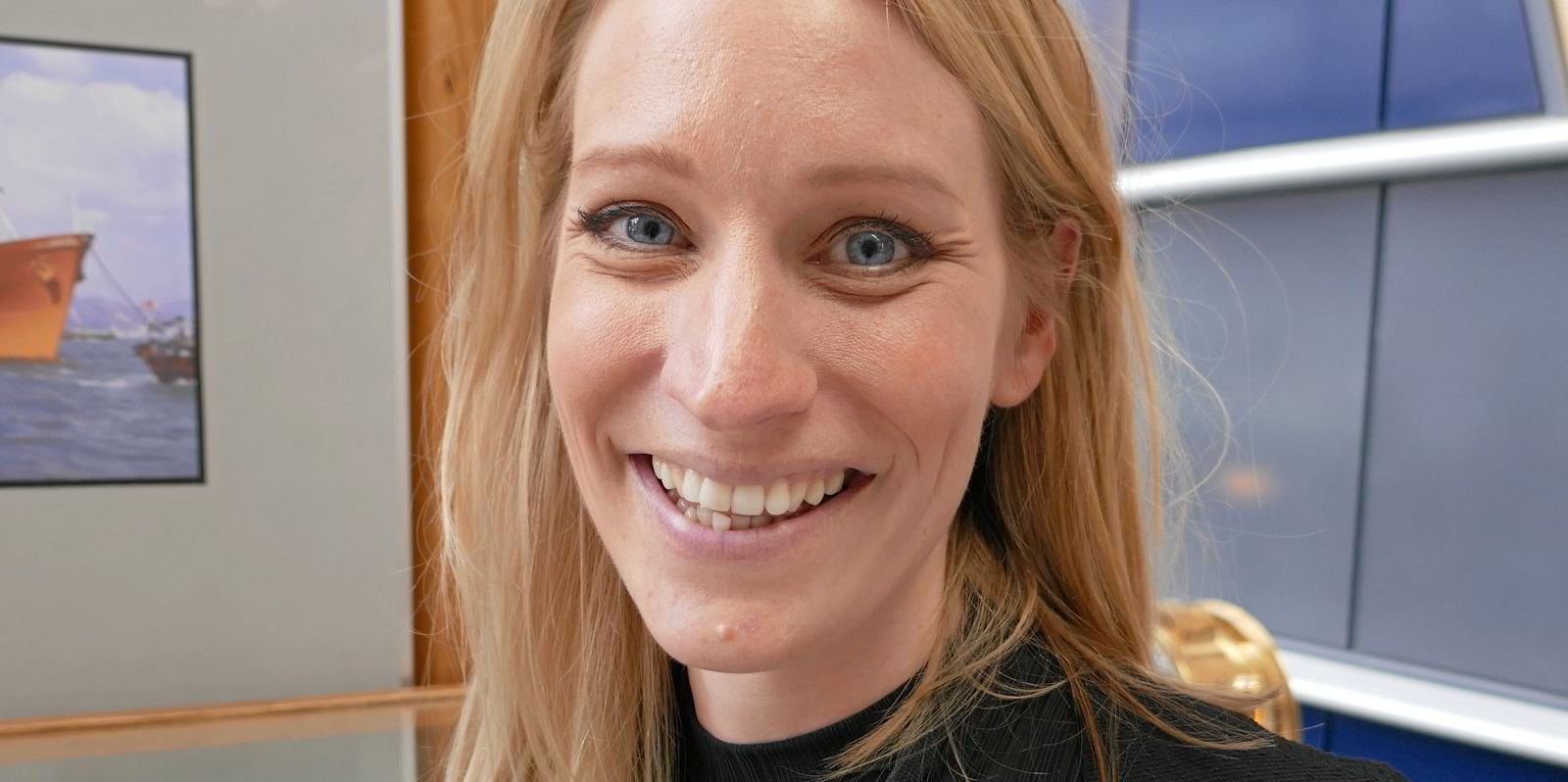The sea has always been part of my life. My father is a doctor who worked in the Port of Tarragona, Spain, attending ill and injured seafarers.
Their gratitude towards him made an impression on me — especially as it was also how my parents met. As such, the maritime sector has always felt like home.
Today, I work for RightShip as a vetting and dry cargo inspections superintendent and recently qualified as a RightShip Inspection Ship Questionnaire inspector. But my path into shipping was not entirely straightforward.
I studied in Barcelona and Antwerp before my first contract with a ferry company in the Mediterranean.
After finishing my cadetship, although I was fully qualified, it was hard to find a job. I’d get to interview and be told: “We think you can do it, but we’re not sure about putting you to sea with our crew.”
This was obviously frustrating — working at sea should be about professionalism, not what gender you are. To be told that I couldn’t have a role because the rest of the crew could not be trusted was difficult.
The opportunity to prove myself as a woman came thanks to being hired to an all-female crew for a fleet of mega-yachts. I worked out of Dubai for five years and learned so much. I had to be “ready to deploy” in less than an hour. My luggage was always in the trunk of my car. If the owners wanted to set sail at 3am, I had to be ready!
I was responsible for supporting the onshore staff with safety matters such as third-party inspections and completing safety certifications. I was between two seas, one of salt water and one of sand, until saying, “Khalas, Dubai!”
I swapped the role for cruise ship management, doing deck and safety compliance in Europe. Finally, with excellent timing, considering that it was the start of the pandemic, I arrived at RightShip in February 2020.
The latest report from Bimco/International Chamber of Shipping notes that despite a 46% increase since 2015, women make up just over 1% of the maritime workforce.
How do we increase the number of women in shipping? One way is by setting an example. There’s an expression — if you see it, you can be it — and I think that’s important. Other women will see me doing a job I love and know they could do it too.
We also need to make maritime life more welcoming to women (despite good progress in recent years). For this, I think communication is key. For example, I once had a situation on board a vessel where I was working as the second officer.
When you get aboard a vessel, you must set up a hierarchy and a common working language, as crews are often international. The professional guidelines that might seem obvious in an office are not always so at sea.
Some male colleagues I came across had never seen a woman at sea before or worked alongside one. They’d never had to think about whether they should make rude jokes, wear a shirt or say good morning.
I think it’s so important — without being patronising — to lay out basic guidelines. On this vessel, it seemed like some of the crew were blanking me. I instantly assumed that I’d offended them in some way. I went to another crew member for advice, and they acted as a liaison between us.
It transpired that, as I was a woman the crew did not know well, they felt it was not respectful to speak to me without my express permission — as a sign of deference. It was such a mix-up!
We assured them that saying good morning to me was a positive, pleasant thing to do. But if I hadn’t turned to that other crew member for advice, I might have spent my whole experience worrying and letting the situation fester. Good communication is essential.
We consider how diverse hiring policies — particularly those encouraging more women to develop careers within the industry — allow different viewpoints and contrasting perspectives to surface, at a time when maritime, like many other sectors, faces steep recruitment challenges.
For example, if current recruitment strategies and offers don’t change, it’s predicted that by 2026, shipping will be short 26,000 employees. Life at sea has to be made fair — and appealing — to a wider range of candidates, many of whom could quite comfortably remain sat behind their desks at home.
Leading organisations need to be putting themselves out there, saying, “Look at us, we’re confident that we are a good place to work.” From this starting point, a situation will follow in which people who want to work in the maritime industry start to notice those examples of best practice and refuse to work anywhere else.
Across the industry, onshore and offshore, we can consider recruitment processes carefully, making sure not to use gendered language and working around possible roadblocks in people’s careers — such as returning to shore to have a family. How do we make it easier for people to return to sea, if they need to gain more experience to apply for certain roles?
These are all questions that I know RightShip is considering as part of its own environmental, social, governance journey towards zero harm in the industry.
Carla Chamorro is a vetting and dry cargo inspections superintendent, recently accredited as a RightShip Inspection Ship Questionnaire inspector






